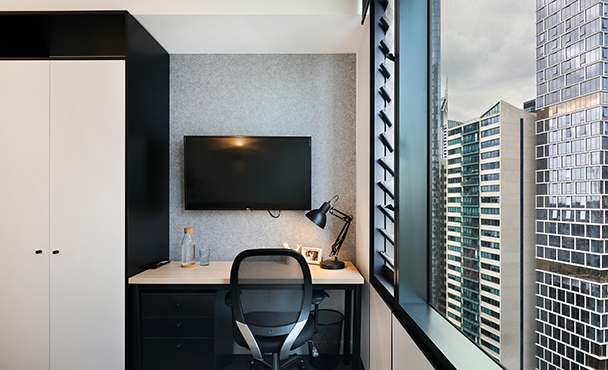The Iglu Guide | Blog
How to make your home study area work best for you

Now that we’re all familiar with working and studying remotely, it’s time to convert that once temporary solution into an inviting, productive and more permanent study space.
That little corner of the room with papers, pencils and half-empty coffee cups stacking up has reached its expiry date. It’s time to kickstart your study experience from the ground upwards – here’s what you need to do.
Mark your area
No matter where you live, whether it’s an apartment, house or shared room, you will need to pick a spot that will become your permanent study space. If you’re lucky enough to have a private room with a desk, that’s perfect. Just make sure you choose a place you like, because you will be seeing a fair bit of it.
Moving your books around and studying in different spaces can be distracting, disorientating – and time wasting. It’s ok to mix it up now and again with a library session or with friends, but it’s really important to keep that home study area consistent and available. The minute you sit down in this space, you’re straight into study mode and ready to go.
Plan the space
Choose a study area that has plenty of access to natural light. This really helps lift your mood as well as bringing a little Vitamin D into the room. Try and avoid any light shining directly into your eyes, natural or otherwise, and save some room on your desk for a pot plant. These green friends are proven to reduce stress, soothe your mind and even improve your concentration! Keep it low maintenance like a spider plant or a snake plant and enjoy all the benefits that will come your way.
Get ergonomic
There’s lots of information out there on how to have your computer best set up on your desk. With so many hours now spent online – and seated – that’s a lot of extra pressure placed on the back and neck area. Those little niggles have a nasty habit of turning into bigger niggles the longer we go on, so it makes perfect sense to get it right from the start and minimise the long-term effects on our physical posture.
Here are the main things to consider:
- Make sure your desk comes between your waist and ribcage
- Rest your feet on the floor
- Your gaze should face the centre of your computer screen
- Keep your arms at a 90º angle and use a separate keyboard and mouse
- An ergonomic chair is ideal with a lumbar support and adjustable height
Stay organised!
If you think it’s easy to study efficiently in a mess, think again. It has been proven that the physical environment of a work area has a significant effect on our output. Not only are we wasting valuable time every time we misplace a document or file, the clutter and mess affects our stress and anxiety levels. It also impacts our ability to focus – and just the sight of all that clutter drains our brain power. Enough! Procrastinate no more and get yourself organised. There are plenty of accessibly-priced desk storage solutions at Kmart or Target that will help you feel on top of things. Have everything you need within reach – but limit yourself to the items that are relevant to studying. Also, avoid using your phone during study periods.
Settle in
Make sure you create a comfortable space, but be wary of getting too comfy… If pulling on your favourite track pants and an old t shirt are going to make you want to curl up in bed with your Netflix and popcorn – when you should be busting out a study session – don’t do it! This is your space, so make sure you personalise it exactly as you please. Try some pictures, inspirational quotes or different photos and leave the loud music for your break times. If you’re happily singing along to your favourite tracks, the chances are you’re not focussed 100% on your work.
Take regular breaks
While studying is really important, remembering to stop is equally as important. Taking breaks are hugely beneficial to your output as they improve your mood, keep your mind refreshed and help you to efficiently absorb information. Use your break times to catch up with friends, do some exercise, or indulge in something unrelated to work. If you work mostly from a screen, try and avoid it in your breaks. The best part about having a dedicated study area is that you can just put your pen down and leave – knowing that you can return at any time and simply pick back up where you left off.
Feature image: Standard Studio Apartment, Iglu Melbourne City


